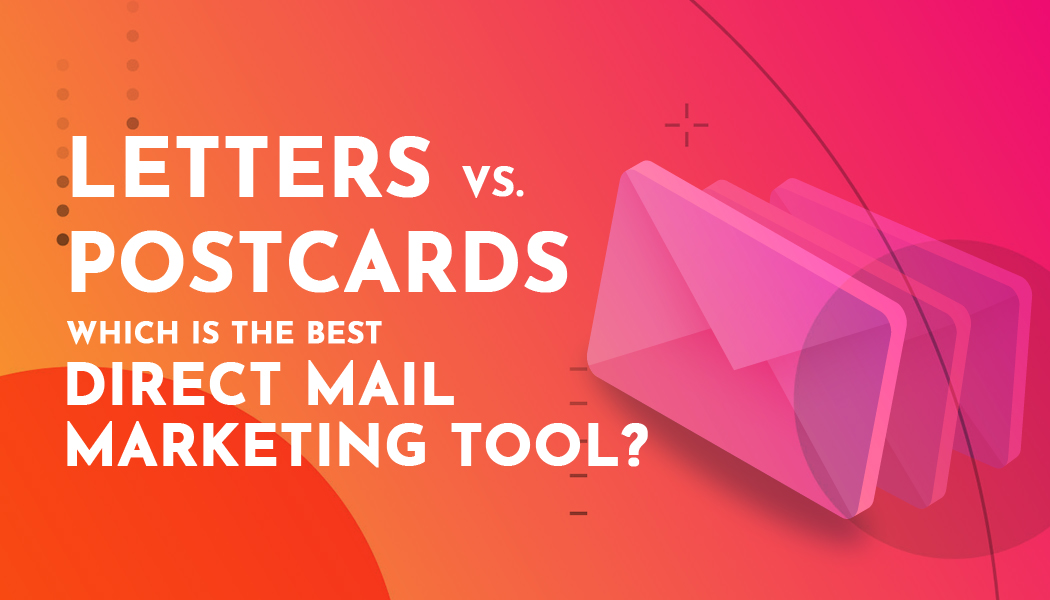How SEO and Web Design Will Supercharge Your Dental Practice
Your Website as a Patient Magnet
In the digital age, a compelling online presence is vital for dental practices aiming to attract a steady influx of patients. Search Engine Optimisation (SEO) stands as a cornerstone in this endeavour, acting as the beacon guiding potential patients to your dental practice amidst a sea of online competition. On the other hand, web design isn’t merely about aesthetics; it’s about creating an easily navigable, informative platform that resonates with both your users and search engine algorithms.
The symbiosis between SEO and stellar Dental web design is the best recipe for elevating your dental practice to the pinnacle of search engine rankings, making it easily discoverable by individuals in need of dental services. As SEO expert, Kostas Alekoglu, puts it, "SEO isn't about hitting a magic button and watching the traffic roll in. It’s about providing a seamless, valuable experience to your audience, which is what good web design offers too," says SEO expert, Kostas Alekoglu.
Now, without further ado, let’s delve deeper into the SEO elements that, when entwined with an intuitive web design, can significantly bolster your dental website's visibility and patient engagement.
On-Site SEO Techniques: The Backbone of Your Website's Visibility
On-site SEO techniques are crucial for enhancing your website's visibility in the digital realm. They serve as the cornerstone that guides search engines to interpret your site's content efficiently, thus improving your rankings. The following explores key on-site SEO aspects, shedding light on how each contributes to bolstering your website's online presence.
Meta Tags
Meta tags act as a summary of your page's content for search engines. A well-crafted meta title and description are pivotal for improving click-through rates (CTR), which in turn can positively influence your search ranking. Besides enhancing CTR, they can drive qualified traffic to your website. A recent study found that meta descriptions between 150-160 characters have the best click-through rates. This fact can be added to highlight the importance of well-crafted meta descriptions.
Header Optimisation
Headers help in organising content hierarchically, making it easier for both readers and search engines to navigate through the information. Ensuring a logical header hierarchy can enhance user experience and may contribute to improved SEO rankings. A tip would be to include relevant keywords in your headers.
Image Alt Texts
Image alt texts provide a textual description of images on your website, aiding search engines in understanding the visual content. This is crucial for website accessibility and SEO. Including relevant keywords in the alt text can further optimise image search rankings.
Websites with alt text have a 2% higher conversion rate than those without. This can be used to highlight the importance of image alt texts for SEO and user experience 2 .
URL Structuring
A well-structured URL provides a clear indication of the page’s content, aiding in better search engine indexing. Descriptive URLs get 25% more clicks than generic ones. This can reinforce the importance of having well-structured and descriptive URLs. Ensuring URLs are succinct and descriptive can significantly influence the perception of content relevance and improve page ranking.
Speed and Mobile Optimisation: The Fast Track to Higher Rankings
Speed and mobile optimisation are pivotal in propelling your website to higher search engine rankings. By ensuring swift loading times and mobile responsiveness, you not only cater to the user's need for speed and accessibility but also tick boxes in search engine algorithms. The key aspects are:
Swift Loading Times
A quick-loading website is essential in holding users’ attention and enhancing search engine rankings. A 1-second delay in page load time can lead to a 7% reduction in conversions, emphasising the importance of swift loading times. A faster site provides a superior user experience (UX), which is a significant ranking factor for search engines. A tip to improve loading time is to optimise images and reduce unnecessary code.
Mobile Responsiveness
In today's mobile-driven world, a mobile-optimised website is indispensable for engaging a wider audience and securing better search engine rankings. A mobile-friendly site adapts to different screen sizes, ensuring a seamless user experience. Enhancing mobile responsiveness can lead to increased traffic and improved rankings. A tip here would be to employ a mobile-first design approach, ensuring your site is primed for mobile users before scaling up to larger screens.
Furthermore, simple mobile searches such as “best” have grown by over 80% over the last two years. This statistic underscores the importance of mobile optimisation to cater to the growing number of mobile users.
Content Strategy: Nurturing Connections Through Valuable Insights
A well-thought-out content strategy can transform your dental website into a nurturing ground for patient trust and engagement. Through informative blogging and compelling video content, you not only share valuable insights but build a rapport with your audience.
Informative Blogging
Creating a blog section on your dental website serves as a knowledge hub for visitors. Regular blogging on dental hygiene, common issues, preventive care, and treatments can elevate your practice's authority. Well-researched, SEO-optimised posts can enhance your site's search engine rankings. One tip is to engage with readers by responding to comments and questions.
"Dental blogging is not just about sharing knowledge; it's about building a connection with your audience, addressing their concerns, and showcasing the expertise of your practice," says Kostas Alekoglu.
Video Content
Video content like dental procedure demonstrations or patient testimonials can demystify dental processes, fostering trust with potential patients. Videos can boost website engagement metrics, positively affecting SEO. A tip is to ensure videos are properly titled and tagged to maximise SEO benefits.
Local SEO: Being the Dental Choice in Your Locality
Local SEO is your gateway to becoming the go-to dental clinic in your community. "Near me" or "close by" type searches have grown by more than 900% over two years. By optimising your site, you not only make your practice easily discoverable but also build a local reputation. This is an especially important aspect of web design. Consider using an expert website design agency to ensure you have a finely-tuned local SEO approach that can connect you with local patients, thereby making your dental practice a household name in your vicinity.
Google My Business Listing
Creating or claiming your Google My Business listing is crucial for local SEO, acting as your online business card displaying vital information like location, operating hours, and reviews. A well-optimised listing can notably enhance your local search visibility, making you a top choice for locals seeking dental services.
"Your Google My Business listing is essentially your online business card. Make it as comprehensive and appealing as possible to stand out in local searches," advises local SEO expert, Mark Adams. One more tip is to encourage satisfied patients to leave positive reviews on your listing, as this can significantly boost your local reputation.
Local Keywords
Incorporating local keywords in your website's content, meta tags, and URLs can significantly boost your visibility in local search results. Phrases like "dentist in London" or "London dental clinic" can help locals find your services easily. Utilising local keywords can bridge the gap between your dental practice and local individuals in need of dental services.
One tip here is to research and identify the most-searched-for local dental terms and incorporate them naturally within your website's content to enhance your local search visibility.
Backlinking Strategy: Building Bridges to Your Site
Navigating the realm of backlinking can significantly elevate your website's authority and SEO ranking. Websites on the first page of Google have an average of 30,000 backlinks. With the right actions, your backlinking strategy not only boosts your site's SEO but also positions you as a dental authority in the online community.
Quality Backlinks
Backlinks serve as endorsements from other websites, crucial for bolstering your site's SEO prowess. Quality backlinks from reputable sites can significantly enhance your site's credibility and search rankings. "Think of backlinks as endorsements from other websites. The more reputable the endorser, the better it is for your site's credibility and SEO," notes SEO specialist, Ahmed Dhaif. One tip is to maintain a list of authoritative sites within your field and aim to acquire backlinks from them over time.
Guest Posting on Dental Topics
Guest posting on reputable dental or health-related websites not only provides backlink opportunities but also positions you as an industry expert. This dual benefit allows you to spread awareness while garnering quality backlinks. A tip here is to offer fresh insights or unique advice in your guest posts to provide value to the readers and make a lasting impression, which in turn, can lead to more backlink opportunities in the future.
Social Media Integration: Extending Your Reach Beyond the Website
Amplify your dental practice's online presence through savvy social media integration. This section covers how sharing informative content and leveraging patient reviews on social platforms can not only drive traffic to your website but also foster a trustworthy community around your practice
Sharing Informative Content
Social media shares of content can lead to a 22% boost in page views. Therefore, promoting your insightful blog posts and videos on social media platforms can significantly extend your reach, drawing a wider audience towards your dental practice. Sharing this valuable content not only directs traffic back to your website, enhancing your site's SEO over time, but also establishes your practice as a helpful resource in the community.
A tip here is to share your content at times when your target audience is most active to maximise visibility and engagement.
Patient Reviews and Testimonials
Encouraging satisfied patients to share their positive experiences on social media platforms can substantially bolster your practice's reputation. Additionally, featuring these testimonials on your website can enhance trust, SEO, and convert prospects into patients. A real-life endorsement can resonate deeply with potential patients, establishing a level of trust before they even walk through your door.
"Social media isn't just about promotion. It's a channel to foster a community, engage with patients, and build a reputable brand," shares Kostas Alekoglu. A tip is to create a simple and accessible platform for patients to leave reviews, making the process effortless for them.
Tracking and Analysis: The Compass for Your SEO Journey
Harness the power of data with Google Analytics and Conversion Tracking to navigate the SEO journey of your dental website. With expert commentary and practical tips, tracking and analysing key metrics can fine-tune your SEO endeavours, leading to better engagement and higher patient retention.
Google Analytics
Google Analytics acts as a magnifying glass, revealing the intricacies of how visitors interact with your dental website. It unveils a treasure trove of data, ranging from the sources of your traffic and the popularity of different pages to the duration visitors linger on your site. By delving into this data, you can tailor your SEO strategies for enhanced outcomes. Businesses using Google Analytics are 50% more likely to report improvements in decision-making.
"Google Analytics isn't just a data collection tool; it's a treasure trove of insights that can significantly guide your SEO strategies," says data analyst, Timothy Clarke. A helpful tip is to set up custom dashboards in Google Analytics for a quick overview of key metrics that matter most to your dental practice.
Conversion Tracking
Conversion tracking is the lens through which you can gauge the effectiveness of your SEO endeavours, by monitoring pivotal actions such as form submissions or appointment bookings on your website. Discerning what catalyses conversions can significantly refine your SEO and content stratagems, steering you closer to your goal of patient engagement and retention. It’s not merely about attracting a myriad of visitors, but about enticing the right individuals who would transition into loyal patients.
A useful tip is to define what a ‘conversion’ means for your dental practice, be it an online appointment booking, a contact form submission, or a phone call, and track these actions meticulously to measure the ROI of your SEO efforts.
Conclusion: Setting the Stage for Continuous Growth
We've traversed the landscape of SEO strategies tailored for dental websites, highlighting the synergy between well-thought-out SEO tactics and intuitive web design. Embarking on this SEO journey not only propels your website's search engine rankings but also paves the way for a genuine connection with your potential patients, thus setting the stage for a thriving dental practice.




